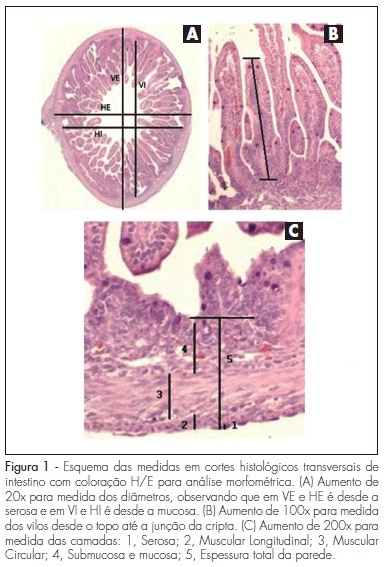Revista Brasileira de Ginecologia e Obstetrícia. 2010;32(4):163-168

PURPOSE: to evaluate the effectiveness of the IUGR model by uterine artery ligation mimicking placental insufficiency in rats. METHODS: sprague-Dawley rat fetuses were divided into three groups: IUGR (intrauterine growth restriction), with fetuses in the right horn of pregnant rats subjected to right uterine artery ligation at 18.5 days of gestation (term = 22 days); C-IUGR (control of restriction), with control fetuses in the left horn, and EC (external control), with fetuses of intact rats. Animals were harvested by cesarean section at day 21.5 days of gestation. Fetuses were weighed and then sacrificed. The intestine, liver, kidney and placenta were weighed and dissected for morphometric and histological analysis. RESULTS: the morphometric data showed decreased body weight (BW), liver weight (LW) and intestinal weight (IW) of fetuses with IUGR compared to C-IUGR and EC (p<0.001). The placental weight (PW), renal weight (RW) and LW/BW, IW/BW, and RW/BW ratios did not change. IUGR fetuses had decreased kidney thickness (p<0.001) and decreased thickness of the intestinal mucosa and submucosa (p<0.05). Histological evaluation showed reduction of liver glycogen storage in fetuses with IUGR compared to C-IUGR and CE. CONCLUSIONS: the model described was efficient and caused symmetric fetal IUGR with decreased size of most organs, especially the liver, and changes in glycogen stores.
Search
Search in:


Comments